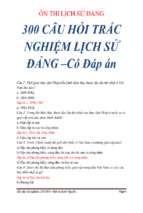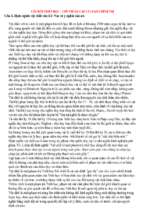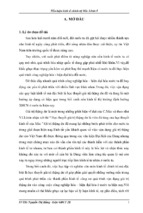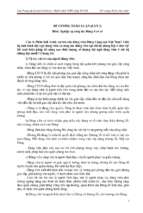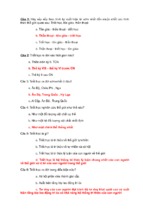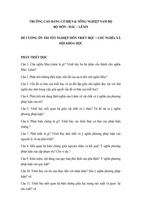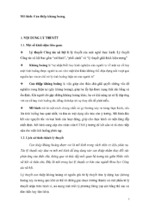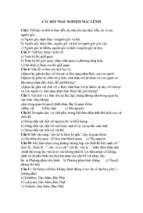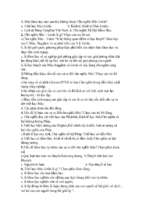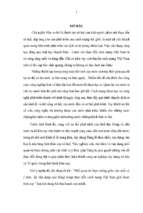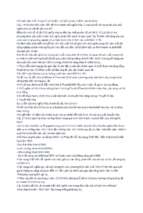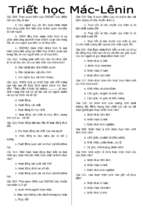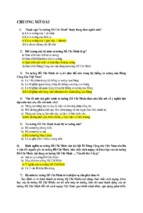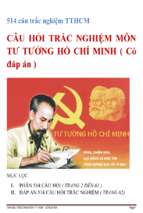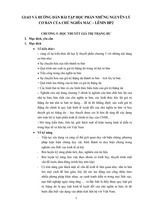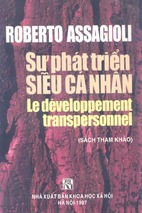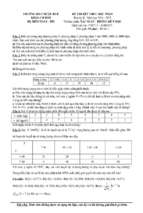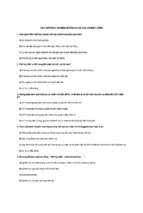Behold the Man
This page intentionally left blank
Behold the Man
Jesus and Greco-Roman Masculinity
colleen m. conway
1
2008
1
Oxford University Press, Inc., publishes works that further
Oxford University’s objective of excellence
in research, scholarship, and education.
Oxford New York
Auckland Cape Town Dar es Salaam Hong Kong Karachi
Kuala Lumpur Madrid Melbourne Mexico City Nairobi
New Delhi Shanghai Taipei Toronto
With offices in
Argentina Austria Brazil Chile Czech Republic France Greece
Guatemala Hungary Italy Japan Poland Portugal Singapore
South Korea Switzerland Thailand Turkey Ukraine Vietnam
Copyright # 2008 by Oxford University Press, Inc.
Published by Oxford University Press, Inc.
198 Madison Avenue, New York, New York 10016
www.oup.com
Oxford is a registered trademark of Oxford University Press
All rights reserved. No part of this publication may be reproduced,
stored in a retrieval system, or transmitted, in any form or by any means,
electronic, mechanical, photocopying, recording, or otherwise,
without the prior permission of Oxford University Press.
Library of Congress Cataloging-in-Publication Data
Conway, Colleen M.
Behold the man : Jesus and Greco-Roman masculinity / Colleen M. Conway.
p. cm.
Includes bibliographical references and index.
ISBN: 978-0-19-532532-4
1. Men in the Bible. 2. Bible. N.T. Gospels—Criticism, interpretation, etc.
3. Masculinity—Religious aspects—Christianity—History of doctrines—Early church,
ca. 30–600. 4. Men (Christian theology) 5. Jesus Christ—Person and offices. I. Title.
BS2545.M39C66 2008
225.8'30531—dc22
2007035820
9 8 7 6 5 4 3 2 1
Printed in the United States of America
on acid-free paper
To David,
vir bonus
This page intentionally left blank
Preface
When I wrote my dissertation on the male and female characters in
the Gospel of John, I had originally planned to include a chapter on
Jesus. Instead, my first teaching position and the birth of my two
children took the place of that chapter, which in any case had seemed
a daunting task. Still, I was never quite satisfied with omitting consideration of Jesus as a gendered character in the Gospel of John, and
I suppose it was inevitable that I would return to the topic. When I
did, my interests took me beyond John to consideration of the gendered aspect of Jesus across the New Testament. Soon, I found myself
involved in what, once again, seemed a very daunting task. And
once again, I found myself having to limit the scope of the work so that
it might actually be published before my children had children of
their own. For this reason, I have had to restrict my focus to the
presentations of Jesus in the Gospels, the Pauline literature, and the
Book of Revelation. I have also had to limit my research on the
enormous amount of literature devoted to New Testament Christology. Instead of reviewing this scholarship in every chapter, I have
focused on illustrating what a gender-critical approach helps us learn
about the presentations of Jesus in the New Testament. That is to say,
the chapters devoted to the New Testament material are intended
primarily as gender-critical analyses of the figure of Jesus, rather than
comprehensive treatments of the Christology of each writing. Even
in the case of gender analysis, there is certainly more to learn than
what I offer here. It is my hope that this initial sustained reading of
viii
preface
ancient gender ideology and New Testament depictions of Jesus will stimulate
more work and further conversation on these topics.
For style and references I have followed the SBL Handbook of Style: For
Ancient Near Eastern, Biblical, and Early Christian Studies (Patrick Alexander
et al., eds., 1999). Translations of primary classical sources are from Loeb
Classical Library volumes unless otherwise noted. Translations of biblical
material are from the NRSV unless otherwise noted.
Many people have assisted in this project over the past six years. I shared
early versions of chapters with the Gender and Theory group that met in our
apartment for two years. I benefited greatly from my conversations with Dale
Martin, Diana Swancutt, Virginia Burrus, Stephen Moore, and David Carr. I
am also grateful for the many opportunities I have had to present the research
that led to the completion of this book. Before the book was fully conceived, the
Philo of Alexandria Group at the American Academy of Religion (AAR) and
Society of Biblical Literature (SBL) annual meeting in Denver in 2001 gave me
the chance to venture outside my research on John and explore gender issues
in relation to Philo’s depiction of Moses. Early versions of my work on Paul
were presented at the annual meeting of the Catholic Biblical Association in
2002. Martti Nissenen and Risto Uro generously invited me in 2003 to give a
lecture at the University of Helsinki on my work on John and masculinity.
Initial work on the Gospels was presented as a research report at the annual
meeting of the Catholic Biblical Association in 2004. Later that year I presented a revised version of this work for the Jesus Traditions, Gospels and
Negotiating the Roman Imperial World Consultation at the annual meeting of
the AAR/SBL in San Antonio. The seeds of the chapter on Luke were sown for
a presentation to the Synoptic Gospel Section at the 2005 AAR/SBL annual
meeting in Philadelphia. As my work on Paul developed, I had another opportunity to present it to the Pauline Epistles Section at the 2006 AAR/SBL
meeting in Washington, DC. Initial work on the Book of Revelation was presented at the 2007 Mid-Atlantic Regional AAR/SBL meeting. Finally, Deirdre
Good and Stephen Moore both graciously invited me to discuss my work with
their students at General Theological Seminary and Drew University, respectively. Seton Hall University granted me a yearlong sabbatical without which I
could not have completed this book.
My thanks also to the Society of Biblical Literature and Brill for granting
me permission to include revised versions of two previously published articles.
Portions of chapter 3 were first published as ‘‘Philo of Alexandria and Divine
Relativity,’’ Journal for the Study of Judaism 34 (2003): 471– 91. Chapter 8 appeared in an earlier version as ‘‘ ‘Behold the Man!’ Masculine Christology in the
preface
ix
Fourth Gospel,’’ in New Testament Masculinities, ed. Stephen D. Moore
and Janice Capel Anderson (2003), 163–89.
I am also extremely grateful to several individuals who read portions of the
manuscript along the way. Jennifer Glancy, Todd Penner, Dale Martin, and
Janice Capel Andersen all read several chapters and provided highly useful
feedback and encouragement. Stephen Moore was also very supportive, reading the entire manuscript in a short period of time. He not only pushed me to
work harder in places; he also saved me from some embarrassing oversights. If
I’d had more time and energy to follow through on all his suggestions, no
doubt the book would be the better for it. Many thanks also to Cynthia Read,
Meechal Hoffman, Christi Stanforth, Liz Smith, and others at Oxford University Press with their expert help on the editing and production of my
manuscript. Most of all thanks to my husband, David Carr, who cheerfully and
promptly read every chapter (sometimes more than once) and always gave me
more to think about. Meanwhile, he regularly volunteered to perform unsavory
household tasks because I was ‘‘working on my book.’’ This book is far better
than it might have been without his continual love and support.
This page intentionally left blank
Contents
1. Introduction
Jesus and Gender, 3
2. How to Be a Man in the Greco-Roman World, 15
3. Constructing the Lives of Divine Men
Divus Augustus, Philo’s Moses, and Philostratus’s Apollonius, 35
4. The Unmanned Christ and the Manly Christian
in the Pauline Tradition, 67
5. The Markan Jesus as Manly Martyr? 89
6. The Matthean Jesus
Mainstream and Marginal Masculinities, 107
7. The Lukan Jesus and the Imperial Elite, 127
8. ‘‘He Must Increase’’
The Divine Masculinity of the Johannine Jesus, 143
9. Ruling the Nations with a Rod of Iron
Masculinity and Violence in the Book of Revelation, 159
10. Conclusion
The Multiple Masculinities of Jesus, 175
Notes, 185
Bibliography, 223
Subject Index, 243
Index of Citations, 247
This page intentionally left blank
Behold the Man
This page intentionally left blank
1
Introduction
Jesus and Gender
Christ stands for the highest type of a strong, virile man, and
there was nothing effeminate about him.
—R. Warren Conant, The Virility of Christ
In 1915, Dr. R. Warren Conant wrote a book titled ‘‘The Virility of
Christ: A New View,’’ with an additional note printed in bold capitals:
‘‘A BOOK FOR MEN.’’ The book addressed the problem of the absence
of men in the church. Dr. Conant’s thesis was that men were not
populating the pews because of the ‘‘feminizing of Christianity.’’
‘‘Consider,’’ he says, ‘‘the conventional Christ as presented by Christian art and Christian preaching’’:
From lovely illuminated church windows and from Sundayschool banners he looks down upon us, ‘‘meek and lowly,’’
with an expression of sweetness and resignation, eyes often down-cast, soft hands gently folded, long curling hair
brushed smoothly from a central parting—all feminine,
passive, negative. Although he lived in a country where the
sun’s heat during a large part of the year made some covering for the head necessary, art requires that Christ should
always go bareheaded; probably in order to give full effect to
his womanish hair and appearance.
Then for fear that they might not give him sufficient
appearance of sanctity and purity Christ must present to us
4
behold the man
a languid pose and smooth line-less features, destitution of expression save a pensive melancholy, no character, no virility.1
As an antidote, Conant contends that ‘‘Christian art and Christian preaching
need a strong tonic of Virility. . . . Why not hold up to the world a portrait drawn
to the life of the Manly Christ in place of the womanish? Why have we no
Christ of the Denunciation, towering majestic, tense with righteous wrath; the
eye flashing, the arm stretched forth in judgement—the impersonation of
masterful virility! Are the painters and preachers afraid of it?’’2
Conant was not the only author calling for a ‘‘muscular Christianity’’
during this period. Bruce Barton begins his book The Man Nobody Knows with
a story of his boyhood struggle to love the Jesus pictured on his Sunday-school
wall. ‘‘It showed a pale young man with flabby fore-arms and a sad expression.
The young man had red whiskers.’’ He knew Jesus was the Lamb of God, but
that sounded like ‘‘something for girls—sissifed.’’3 Similarly, Warner Sallman,
painter of the ubiquitous Head of Christ, was reportedly influenced by the
following conversation with E. O. Sellers, faculty member of Chicago’s Moody
Bible Institute:
‘‘I understand you’re an artist, Sallman, and I’m interested in
knowing why you’re attending the institute.’’
‘‘Well, I’m here because I wanted to increase my knowledge of the Scriptures. I want to be an illustrator of biblical subjects.’’
‘‘Fine! There is a great need for Christian artists. Sometime I
hope you give us your conception of Christ. And I hope it’s a manly
one. Most of our pictures today are too effeminate.’’
‘‘You mean to say you think Jesus was a more rugged type? More
of a man’s man?’’
‘‘Yes, according to the way I read my Bible. We know he
walked great distances and slept out under the stars; he was rugged and strong. He preached in the desert, so he must have been
tanned. More than that, the Word says he set his face ‘like a flint’ to
go down to Jerusalem, so he wasn’t soft or flabby. We need a picture
of that kind of Christ, Sallman, and I hope you will do it some day.’’4
Such accounts reveal many things about the gender ideology of early
twentieth-century America. One could note the equation of a particular type of
physical appearance with ideal masculinity, the notion of ‘‘character’’ as synonymous with virility, and the anxiety about the church going ‘‘soft.’’ Indeed,
this last point—the threat of ecclesial impotence—is what drives the quest for
a manly Jesus in this period. Thus, Conant and Barton repeatedly attest to
introduction
5
the masculinity of Christ by pointing to qualities such as courage, nerve, force
(physical, mental, and moral), sound judgment, persistence, endurance, and
so on.
Fast-forward to the mid- to late twentieth century and the emergence of a
different combination of gender ideology and Christology. As women began to
find their voices in the public sphere and feminist theologies began to claim
authority for women in the church, new questions about the gender of Jesus
emerged. In this context, women wrestled with the question of the maleness
of Jesus, with feminist theologian Rosemary Radford Ruether asking directly,
‘‘Can a male savior save women?’’5 With such a question in mind, scholars
sought the ‘‘feminine side’’ of Jesus and focused on the presence of women in
the Gospel traditions.6 At the same time, the image of Jesus as liberator of the
oppressed (including women) was emphasized. Not surprisingly, Ruether’s
conclusions regarding the gender of Jesus were different from those reached by
Conant and Barton some sixty years earlier. Whereas Conant and Barton see
the virility of Jesus as essential to the life of the church, Ruether saw it as
ultimately insignificant. She argued:
Theologically speaking, then, we might say that the maleness of Jesus
has no ultimate significance. It has social symbolic significance in the
framework of societies of patriarchal privilege. In this sense, Jesus
as the Christ, the representative of liberated humanity and the liberating Word of God, manifests the kenosis [emptying] of patriarchy.7
Since the initial wave of feminist challenges to biblical patriarchy, there
have been numerous attempts to construct a feminist Christology.8 Several of
these attempts have drawn on New Testament associations of Jesus with the
Wisdom traditions of the Hebrew scriptures.9 For example, Elizabeth Johnson
interprets the story of Jesus as that of Wisdom’s child, Sophia Incarnate.10
Such an interpretation, she suggests,
leads to the realization that as Sophia incarnate Jesus, even in his
human maleness, can be thought to be revelatory of the graciousness
of God imaged as female. . . . Not incidentally, the typical stereotypes
of masculine and feminine are subverted as female Sophia represents creative transcendence, primordial passion for justice and
knowledge of the truth while Jesus incarnates these divine characteristics in an immanent way relative to bodiliness and the earth.11
Such arguments, coupled with the earlier concerns about ‘‘muscular Christianity,’’ should make clear that the way one interprets and portrays the gender
identity of Jesus makes a difference. They also demonstrate that for at least the
6
behold the man
past one hundred years, gender and Christology have been viewed as closely
related categories. Indeed, from certain perspectives in this history, it seemed
that the very future of the church depended on how one viewed the gender of
Jesus. The saving power of the Christ was either inextricably linked to his
gendered identity, his ‘‘manliness,’’ or totally distinct from it.
But the interest in gender and Christology is not limited to the past century.
Caroline Walker Bynum has explored the attention given to the gendered nature of Christ in the medieval period, especially the literary and visual expressions of Jesus as a mother.12 Such images conveyed the nurturing aspects of
Christ to the believer, especially to the Cistercian monks of the twelfth century.
Moving back earlier still in the history of the church, one finds an explicit
interest in the role of gender in Gnostic accounts of creation and the saving
power of Christ.13
The subject of this book is the intersection of gender ideologies and representations of Christ at a still earlier stage of Christological reflection. It
explores the relationship between gender ideologies of the first-century Roman
imperial world and conceptions of Jesus as the Christ in the New Testament.
In particular, the book examines how cultural ideas of masculinity informed
the various representations of Jesus in the writings of the New Testament.
I should make clear at the outset that my goal is not to establish the
influence of patriarchy on New Testament Christology. At this point in the
history of biblical scholarship, that hardly needs doing. Indeed, the accumulated work of feminist biblical scholars during the past several decades has
made the patriarchal nature of the biblical text abundantly clear.14 By studying
the intersection of masculinity and New Testament Christology, my aim is to
provide an additional resource for evaluating the role of gender in the Christian
church as it relates to the broader culture. Cultural ideologies often function
below the radar of those who are affected by them. This is true whether one
unconsciously embraces this ideology or feels the strain of its imposition. By
examining the influence of ancient gender ideologies in the Greco-Roman
period, we might become ever more conscious of the multiple ways contemporary gender ideologies function in our own lives. Moreover, an examination
of the construction of masculinity in relation to New Testament Christology
allows new perspectives on the familiar question of the relationship between
Christ and culture. By examining the complex relationship between ancient
masculine ideology and New Testament images of Jesus, I hope to provide an
additional resource for further feminist Christological reflection and construction.
Thus, I propose an analysis of the various ways the New Testament authors related to the ideology of masculinity that was dominant during this
introduction
7
particular historical period. As chapter 2 will make clear, depictions of Jesus or
understandings of the Christ would have to relate in some way to the cultural
demands of ideal masculinity in order to have any credibility in the broader
culture. Moreover, what one might identify as the ‘‘fact’’ of biological sex—
Jesus was a man and not a woman—would not be proof enough to satisfy these
demands. Instead, one would need to establish the ways in which Jesus Christ
fulfills, redefines, rejects, or does something else entirely to Greco-Roman
cultural ideals of masculinity.
In fact, there were many types of cultural interactions available to the early
Christians who wrote about Jesus. On this point, the work of Greg Woolf is
informative. Speaking on the complicated relationship between Rome and
Greece, he states, ‘‘Roman responses to Hellenism consisted of a complex and
partly incoherent mixture of adoption, adaptation, imitation, rejection, and prohibition, while the rhetorical poses repeatedly struck include assertions of
admiration, of condemnation and of reconciliation.’’15 I suggest that the New
Testament contains a range of similarly complex responses to the ideology of
masculinity. At times, one finds what seems like a clear rejection of the notions
of power and strength that were so closely linked to definitions of manliness.
At other times, these very concepts are used to construct a picture of Jesus that
is a challenge to imperial power. Still other times, the lines between masculine
and feminine constructs are blurred, for instance when Jesus is portrayed as a
powerful, authoritative male figure speaking in the language of Wisdom, a
concept that was traditionally personified as female. In every case, however,
one can discern ways in which the New Testament authors both engaged in
and contributed to the ideal of masculinity that coursed through the veins of
the Roman Empire.
This leads to two hermeneutical points that are important for the approach
taken here. First, a fundamental premise of my approach concerns the complex reciprocal relationship between text and context. Rather than assuming
that literary texts reflect historical reality, I follow literary critics in considering
how texts take part in the construction of reality, both in the past and in the
present. Texts help to shape the context of which they are a part. This means
that the New Testament writings are both shaped by and helped shape cultural
expressions of masculinity, divinity, power, and authority.16 Although this
work will not extend much beyond the New Testament period in terms of
textual focus, it will point to ways in which early Christian engagement with
dominant gender ideologies has had an ongoing influence on contemporary
understandings of Christology, gender, and sexuality.
The second point concerns the context in which the New Testament
engagement with dominant gender ideologies takes place. Because I am
- Xem thêm -

